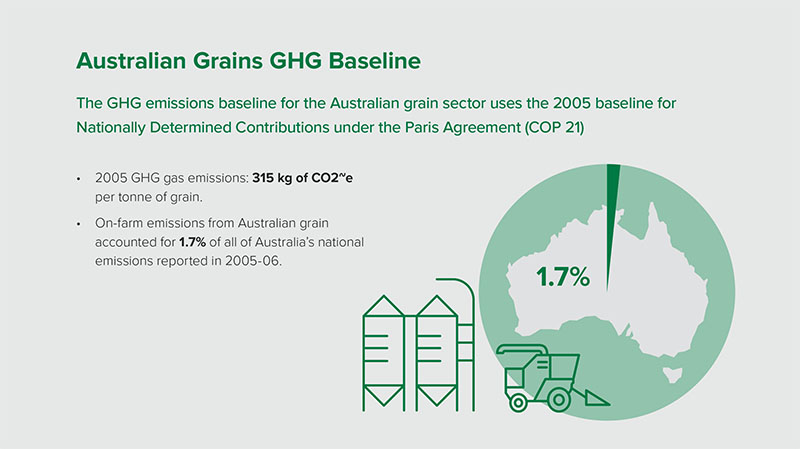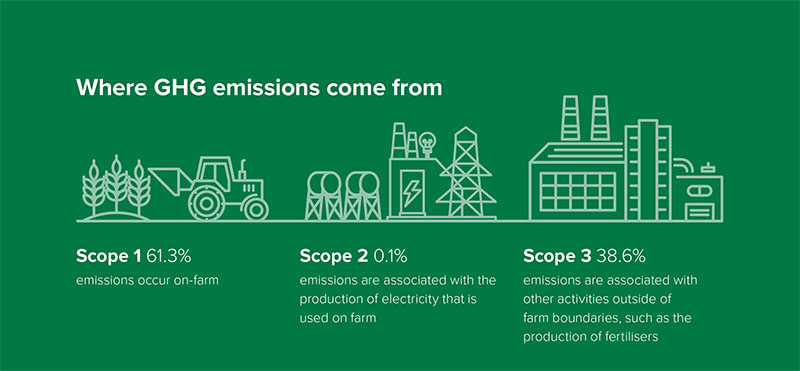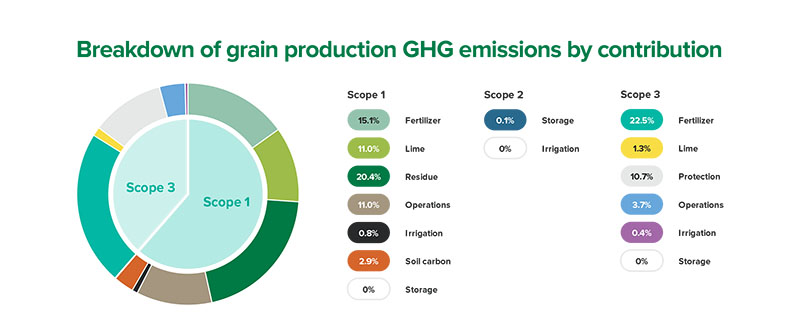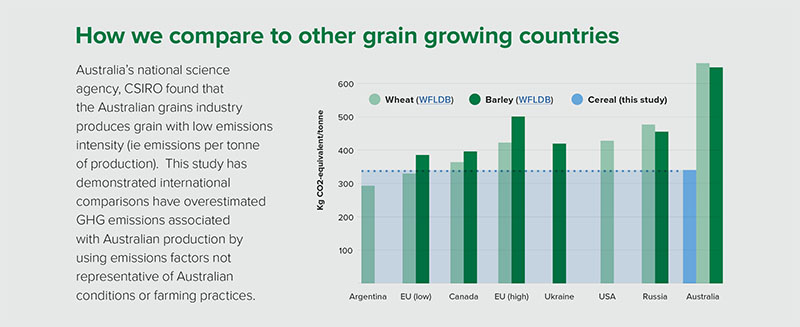Greenhouse gas emissions
Greenhouse gas emissions
As part of our purpose to invest in RD&E to create enduring profitability for Australian grain growers, we are taking a strong RD&E lead not only to help Australian grain growers to adapt to climate change, but also to meet market and community demand that all sectors contribute to reducing global warming.
ABARES has identified that since 2000 the Australian climate has impacted the rate of productivity growth in the grains industry. Over the same period of time, the adoption of innovation led by GRDC investment has allowed Australian grain farmers to maintain positive productivity growth despite the environment and reduce greenhouse gas emissions intensity at the same time.
Australian grain production is a low emitter of greenhouse gases compared to other global producers. Our low emissions intensive production (greenhouse gases emitted per tonne of production) has been important to securing access to the European Union canola market, which is valued at $1 billion per annum and is likely to be a competitive advantage to Australian grain exports in many markets going forward.
In 2020 to understand the Australian grains industry position, GRDC commissioned Australia’s national science agency, CSIRO, to prepare a report to establish a detailed and robust greenhouse gas (GHG) emissions baseline for the Australian grains sector.
Key findings




The role of Australian grain in responding to climate change
By 2030, it is unlikely that Australian grain can reduce its overall GHG emissions without reducing production using current farming systems and practices.
5.5% of the current area used for grain cultivation would need to be set aside for environmental plantings to offset the greenhouse gas emissions associated with Australian grain production. This would cost up to 10% of the current gross value of production.
Lowering the emissions intensity of Australian grain production provides global climate change mitigation without reducing Australian grain production.
A reduction in Australian grain production would result in a corresponding increase of grain production in countries with higher emissions intensity.
GHG emissions intensity of Australian grain production could feasibly be reduced by approximately 15% against the baseline by 2030.
With adoption of better nitrogen application, improved regional rotations and an expected 50% uptake of Controlled Traffic Farming GHG emissions intensity could be further reduced by 15%. Under this scenario on-farm emissions would remain almost the same, total emissions would increase but be offset by higher production.
Next steps
GRDC will continue to invest to further assist Australian grain growers to reduce the greenhouse gas intensity of Australian grain production even further as part of profitable farming businesses. This will include investigating CSIRO’s recommendations for further research in:
- Farming system interventions
- Reduction of emissions in the manufacture of farm inputs
- Research that ensures greenhouse gas accounting is using the most relevant science for Australian grain production.
Read the Australian Grains Baseline and Mitigation Assessment full report.
Adelaide Grains Research Update
More information
Australian Grains Baseline and Mitigation Assessment Factsheet
Australian Grains Baseline and Mitigation Assessment Update paper
Australian grain: a leader in low emissions intensity production
